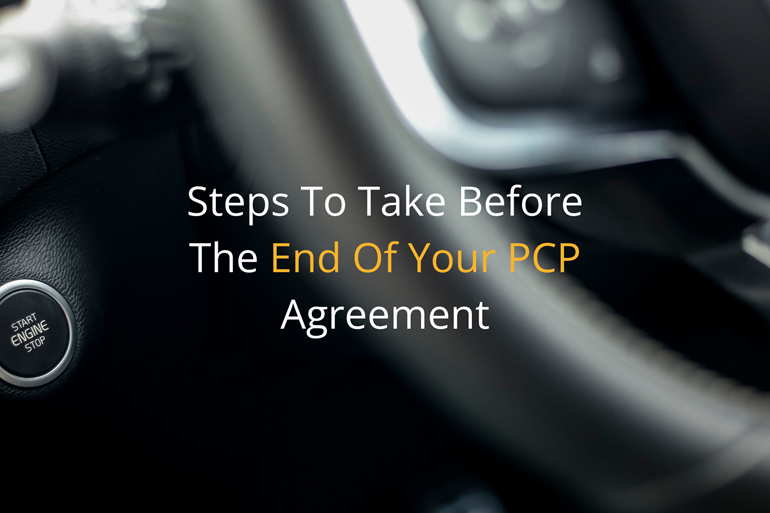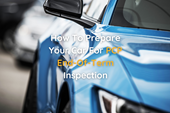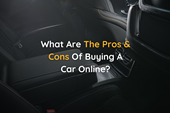
Steps To Take Before The End Of Your PCP Agreement
Nearing The End Of Your PCP? Make It Hassle Free With Our Guide
Quick Links
- Introduction
- Can You Return A PCP Car Early?
- Which Is Cheaper, PCP Or Leasing?
- Steps To Take As Your PCP Agreement Nears Completion
- Revisit Your Agreement
- Get A Pre-Return Health Check
- Understand Your Options
- Don't Let The Dealer Rush You
- Watch Out For Excess Mileage Or Damage Charges
- Consider A Voluntary Inspection
- Gather Your Essentials
- Plan What's Next
- Our Final Word
Introduction
Three or four years ago, you picked up your car under a PCP agreement. At the time, it probably felt like a distant event, but now the end of your contract is looming, and you’ve got a few choices to make. Keep the car? Hand it back? Start a new agreement? If you're feeling a bit unsure, don’t worry. That’s normal.
This guide walks you through what to do as your PCP (Personal Contract Purchase) deal nears completion, so you can avoid last-minute stress or unwanted surprises and make the most of the options available to you.
Before we get started, though, let’s recap some PCP basics.
Read More: Should You Buy, Return Or Upgrade At The End Of Your PCP Deal?
Can You Return A PCP Car Early?
There are two ways you can return a PCP car early: either through voluntary termination, where you’ve already paid 50% of the total finance (including any interest and fees), or through early settlement, where you simply pay the outstanding balance in advance.
Voluntary termination is your legal right, but beware; you may incur charges such as over-mileage fees, repair costs and other fees (which may have been written into your agreement).
What’s more, whilst it’s your right to hand the car back at or above the 50% repayment mark, dealerships and finance companies will make note, and your credit score could be affected.
An early settlement has fewer stipulations, but it requires you to pay the entire finance amount in one go, something which isn’t feasible for most.
What About Refinancing?
Many drivers opt for a new car before their current PCP deal comes to an end, something which dealerships are happy to do, rolling the current car into a new contract.
On the face of it, that sounds ok, but it ultimately extends and increases your financial commitments, something which you should consider extremely carefully.
Which Is Cheaper, PCP Or Leasing?
Generally, leasing is cheaper than PCP as you’re typically only making repayments on the negative equity. However, with that comes less flexibility and, of course, you’ll never have the opportunity to own the car.
PCP, whilst being slightly more expensive, gives drivers more long-term choices, which is why it’s the most popular choice for car financing in the UK.
Remember: No matter which financing option you choose, you could be financially liable for repayment if your car is written off. This amount isn’t always covered fully by your car insurance provider.
If this is something you’re concerned about, take a look at Return To Invoice Gap Insurance (which is suitable for PCP) and Lease Gap Insurance for more peace of mind.
Steps to Take as Your PCP Agreement Nears Completion
1. Revisit Your Agreement
Before anything else, dig out your original PCP paperwork and give it a proper read. You’ll want to remind yourself of a few key points:
- Your agreed mileage limit
- The balloon payment (or Guaranteed Future Value – GFV)
- Terms around fair wear and tear
- The exact end date of your contract
These details matter. If you're wondering what counts as fair wear and tear, the British Vehicle Rental and Leasing Association (BVRLA) offer clear, detailed guidance used across the industry.
2. Get a Pre-Return Health Check
Even if you’ve looked after your car well, it’s smart to get it checked over before the finance company or dealer does. A scuffed alloy, worn tyre or even a missing handbook can come back to bite you in the form of end-of-term charges.
Some dealerships offer a free or low-cost pre-inspection service. If not, consider asking a trusted garage or independent assessor.
According to Citizens Advice, resolving any minor faults before the official handover often works out cheaper than being charged later by the leasing company.
Read More: How To Prepare Your Car For PCP End-of-Term Inspection
3. Understand Your Options
As the end of your PCP agreement approaches, you'll typically have three choices:
- Return The Car: Hand it back and walk away, provided it’s within mileage and in good condition.
- Buy The Car Outright: Pay the final balloon payment and keep the vehicle.
- Part-Exchange: Use any positive equity as a deposit towards a new agreement.
The GFV (Guaranteed Future Value) figure is based on your car’s predicted value at the end of the term. If your car is worth more than that (which can happen in a strong used car market), you can use that difference as leverage for your next deal.
For guidance on current used vehicle values, Auto Trader’s car valuation tool is a reliable resource.
4. Don’t Let the Dealer Rush You
Dealers know your contract’s nearly up, so don’t be surprised if you start getting calls and emails with “exclusive” upgrade offers. These can sound tempting, but take a breath and weigh up your options before you commit.
Ask yourself: Does another PCP deal fit your finances right now, or would leasing, buying used, or holding onto your current car make more sense?
5. Watch Out for Excess Mileage or Damage Charges
Most PCP agreements include a mileage cap. If you exceed it, you’ll be charged typically 3p to 30p per mile. That might sound small, but it adds up quickly. For example, 4,000 miles over could cost you £120 to £1200.
Wear and tear charges also catch people off guard. Most lenders use the BVRLA Fair Wear and Tear Standard, which outlines what's acceptable (stone chips, minor seat wear) and what isn't (deep scratches, damaged alloys, torn upholstery).
Read More: Don’t be caught out. Keep an eye on Common PCP Mistakes (That Could Cost You Money)
6. Consider a Voluntary Inspection
Some finance companies offer a voluntary pre-return inspection. This usually happens two to four weeks before the handover, giving you time to sort anything they flag, on your own terms. If your provider doesn’t offer one, you can always arrange a private vehicle inspection through an independent mechanic.
7. Gather Your Essentials
When it’s time to hand the car back (or trade it in), make sure you’ve got everything that originally came with it:
- Both keys
- The logbook (V5C)
- Full service history and MOT records
- Owner’s manual
- Any accessories that came with the car (charging cables, parcel shelf, SD cards, etc.)
Misplacing just one item, especially the spare key, can lead to expensive charges. A Which? report found that replacing a modern car key can cost over £300, depending on the make.
8. Plan What’s Next
If you’re not buying the car or jumping into a new agreement, don’t leave yourself carless. Whether you're looking to lease, finance or buy a used vehicle outright, give yourself enough time to do some research.
And don’t forget: tax and insurance don’t automatically cancel. If you’re returning the vehicle, notify your insurer and the DVLA to avoid unnecessary charges.
Our Final Word
The end of a PCP agreement isn’t complicated, but it can catch you out if you're not paying attention. Give yourself at least a month or two before the handover date to get organised.
Don’t let dealership pressure rush your decision, but do take their incentives seriously; they could potentially save you loads of money in the long run. Review your agreement, know your options, and choose what fits your life, not just what’s convenient for the salesperson.
If you're not sure what route is best, speaking to an independent financial advisor or using comparison tools can give you a neutral view.
We hope this guide helps settle your mind and gives you a bit of focus at the end of your PCP agreement. If you’ve found it useful, feel free to share it with your network; you can even use the Pinterest-friendly image below.
As always, drop us a message on social media if you have any questions or if there’s something you think we haven’t covered here.
Pin It!













